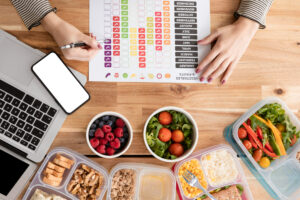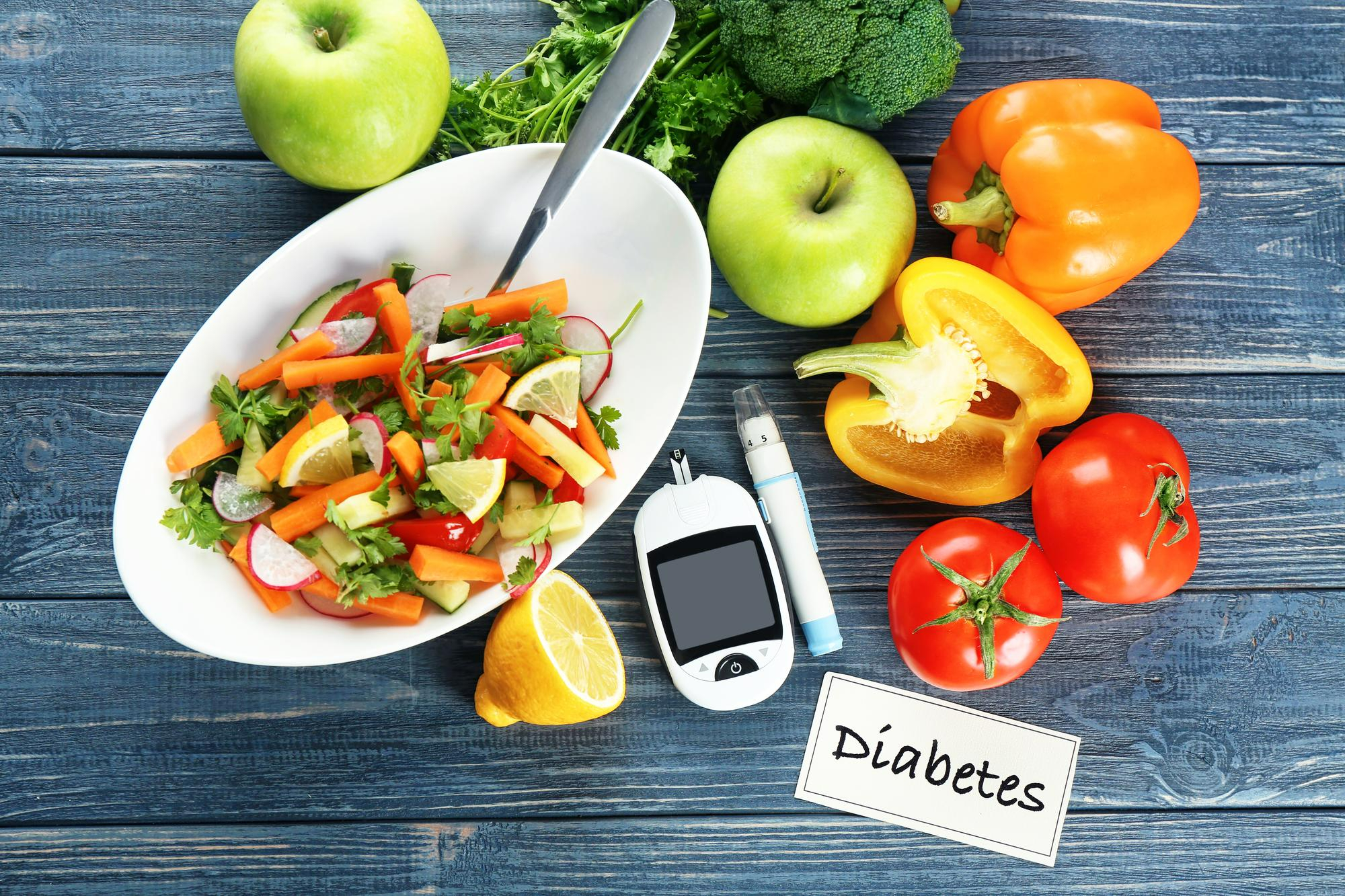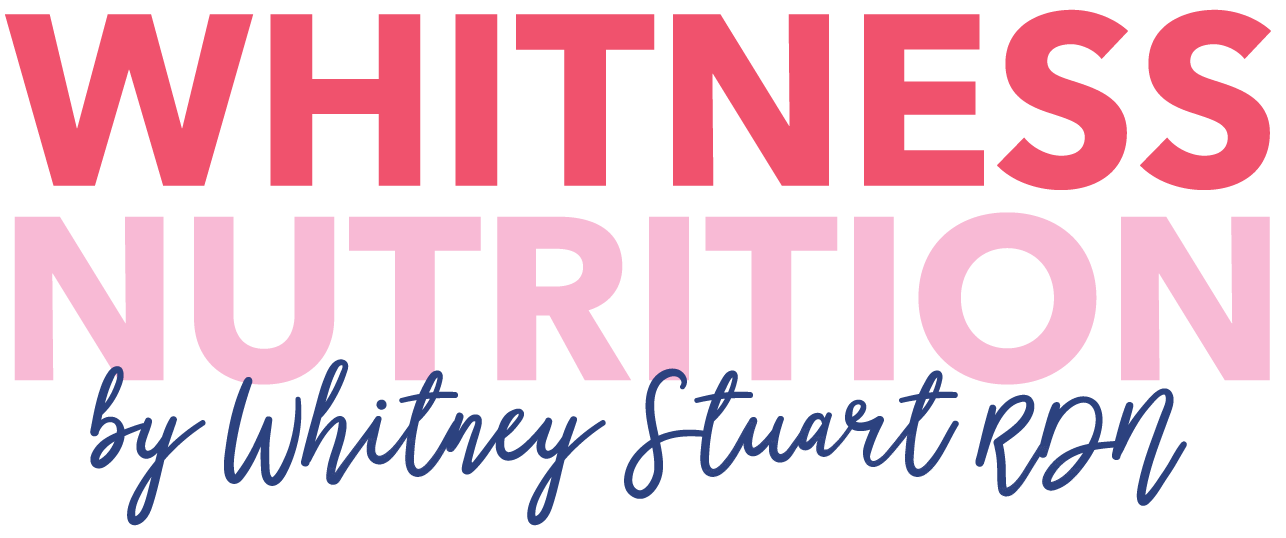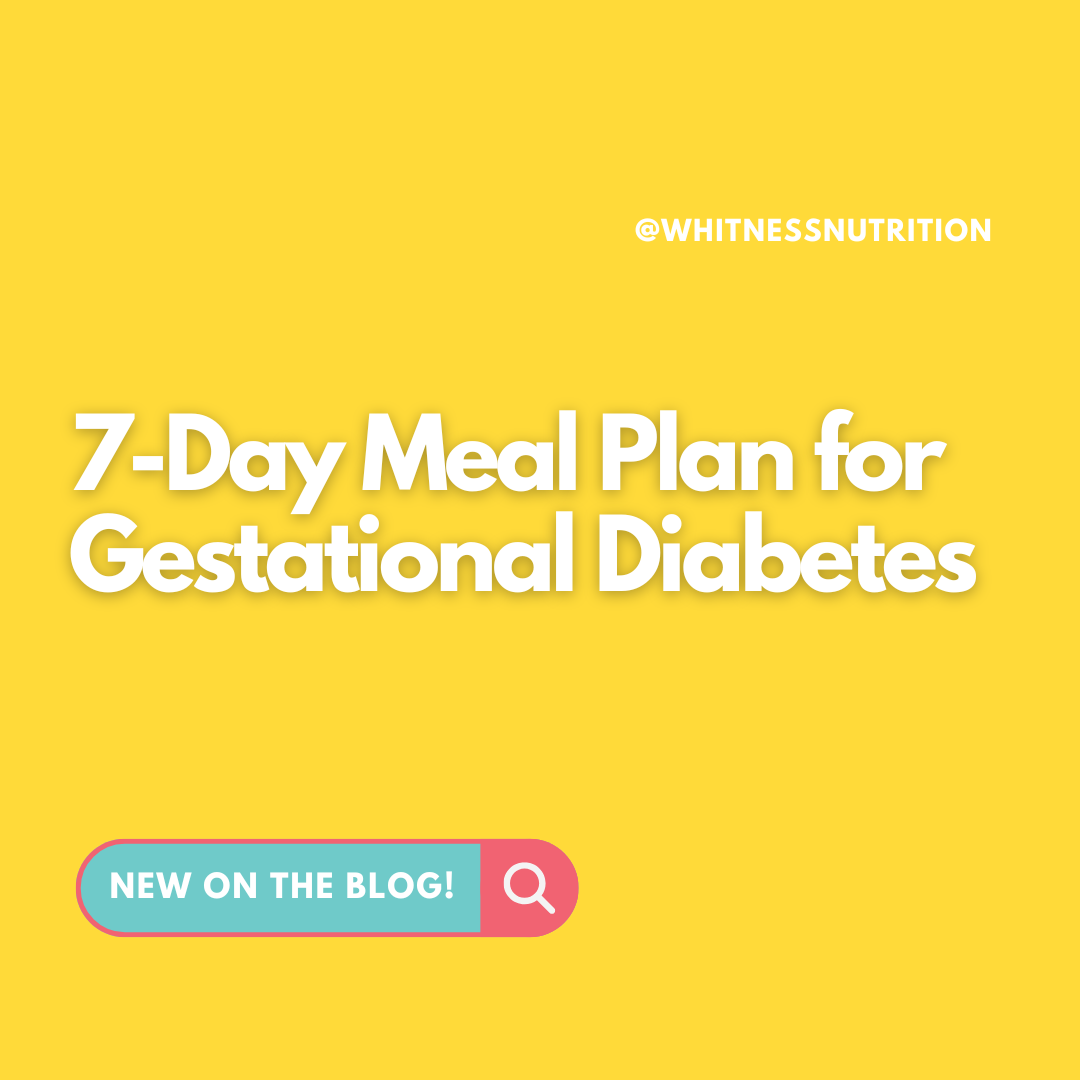7-Day Meal Plan For Gestational Diabetes
When you hear the words gestational diabetes, you might immediately think of restriction, overwhelm, or yet another thing to manage during pregnancy. Deep breath. As someone who’s worked with hundreds of women navigating this diagnosis, I’m here to tell you: with the right support and the right foods, managing your blood sugar can be empowering, not intimidating.
This diagnosis doesn’t mean giving up your favorite meals or spending hours meal prepping. Instead, it’s about embracing balanced, nutrient-dense meals that fuel you and your baby. In this blog, I’m sharing a 7-day meal plan for gestational diabetes that’s practical, blood sugar-friendly, and delicious.
7-Day Meal Plan For Gestational Diabetes
Before discussing the plan, let’s consider why eating at regular intervals and choosing the right foods matter.

What Is a Gestational Diabetes Meal Plan?
A gestational diabetes meal plan is a strategic, nutrient-balanced way of eating that supports steady blood sugar levels throughout the day. It doesn’t mean low-carb. It means smart-carb.
This approach prioritizes real, whole foods that digest slowly and nourish your growing baby. Meals are planned to be:
- Balanced with carbs, protein, and fat
- Rich in fiber and micronutrients
- Timed strategically (yes, eating at regular intervals matters!)
The goal? Avoid blood sugar spikes and crashes that leave you exhausted and anxious—and instead, build a foundation of steady energy and stable glucose.
What to Eat With a 7-Day Meal Plan For Gestational Diabetes
Let’s clear one thing up: you’re not broken. Your body is just working overtime, and blood sugar balance is more critical than ever. When you have gestational diabetes, your insulin response is less effective, which can cause blood sugar spikes after meals. That’s why we pair carbohydrates with protein, fiber, and healthy fats.
Here’s what to emphasize:
- Protein at every meal: Eggs, Greek yogurt, rotisserie chicken, or beans.
- Healthy fats: Avocado, nuts, olive oil, and peanut butter (yes, it’s a healthy staple in my kitchen!).
- Colorful non-starchy vegetables: Broccoli, spinach, zucchini, and bell peppers add fiber and help fill you up.
- High-fiber carbs: Think oats, lentils, apples, and starchy vegetables like sweet potatoes (in moderation).
Try to minimize refined sugars and processed carbs. If you’re not sure where to begin, my post on reducing added sugar is a great resource.
How To Create A 7-Day Meal Plan For Gestational Diabetes

Creating an effective meal plan involves several key strategies:
1. Prioritize Complex Carbohydrates
Always balance your carbs. For example, add an egg and some peanut butter if you’re having a slice of whole grain toast. It slows digestion and prevents that post-meal glucose rollercoaster. Choose whole grains and fiber-rich carbs that digest slowly, such as:
- Brown rice
- Quinoa
- Whole grain bread
- Oats
These help prevent spikes in blood sugar levels.
2. Incorporate Lean Proteins
Half your plate should come from non-starchy veggies. Zucchini, cauliflower, and leafy greens add volume, nutrients, and fiber without spiking blood sugar. Include a source of lean protein in every meal to aid in blood sugar control:
- Chicken or turkey breast
- Fish (like salmon)
- Tofu or tempeh
- Legumes (beans, lentils)
3. Include Healthy Fats
Sweet potatoes and squash are nourishing, but they do impact blood sugar more than non-starchy options. Enjoy them in moderate portions and pair with fat and protein. Healthy fats support satiety and nutrient absorption:
- Avocados
- Nuts and seeds
- Olive oil
4. Choose Smart Snacks
Snacks should never be made of lonely carbs. Think: Greek yogurt with berries, apple slices with peanut butter, or a hard-boiled egg and cherries.
5. Eat at Regular Intervals
Skipping meals or going too long without food can lead to blood sugar dips (hello, hanger). Aim to eat every 3–4 hours and don’t fear a bedtime snack if it helps overnight glucose.
6. Stay Hydrated
Drink plenty of water throughout the day. Proper hydration aids in overall health and can help control blood sugar levels. Because your blood volume increases in pregnancy, you would benefit from a mineral-rich electrolyte 1-2x per day like this one from CURE, or this one from ReLyte
7. Engage in Regular Physical Activity
As your healthcare provider advises, incorporate safe, moderate exercise like strength training, pilates, and walking. Physical activity helps improve insulin sensitivity and better blood sugar control.
Sample Meal Plan For Gestational Diabetes
To help you get started, here’s a 7-day meal plan designed for gestational diabetes. Each day includes balanced meals and snacks to maintain stable blood sugar levels.
👉 Click here to download the PDF meal plan
Note: This meal plan is a general guide. For personalized advice, please consult your healthcare provider or a registered dietitian.

Final Thoughts
Gestational diabetes doesn’t define your pregnancy—it’s just one part of your story. With a well-planned diabetes meal plan, thoughtful nutrition, and consistent physical activity, you can feel confident in fueling yourself and your baby.
If you’re feeling overwhelmed, I see you. I’ve been there with patients who thought they’d have to give up everything they loved. That’s not the case here. This plan is about nourishment, not punishment. It’s about education, not restriction. And it’s about empowering you for a healthy pregnancy—and beyond.
Side note: most of my patients find that they end up in a healthier and happier place when they’ve taken steps to improve their blood sugar during pregnancy. See this as an opportunity instead of a punishment.
Ready to Take the Next Step in Managing Gestational Diabetes with Confidence?
If this 7-day meal plan for gestational diabetes gave you clarity and direction, imagine what personalized support could do. Book a Free Discovery Call. In just 15 minutes, we’ll discuss your biggest struggles, answer your questions, and guide you to the right nutrition plan for your pregnancy and beyond.
✨ Book your Discovery Call here – your real-food journey starts now.






